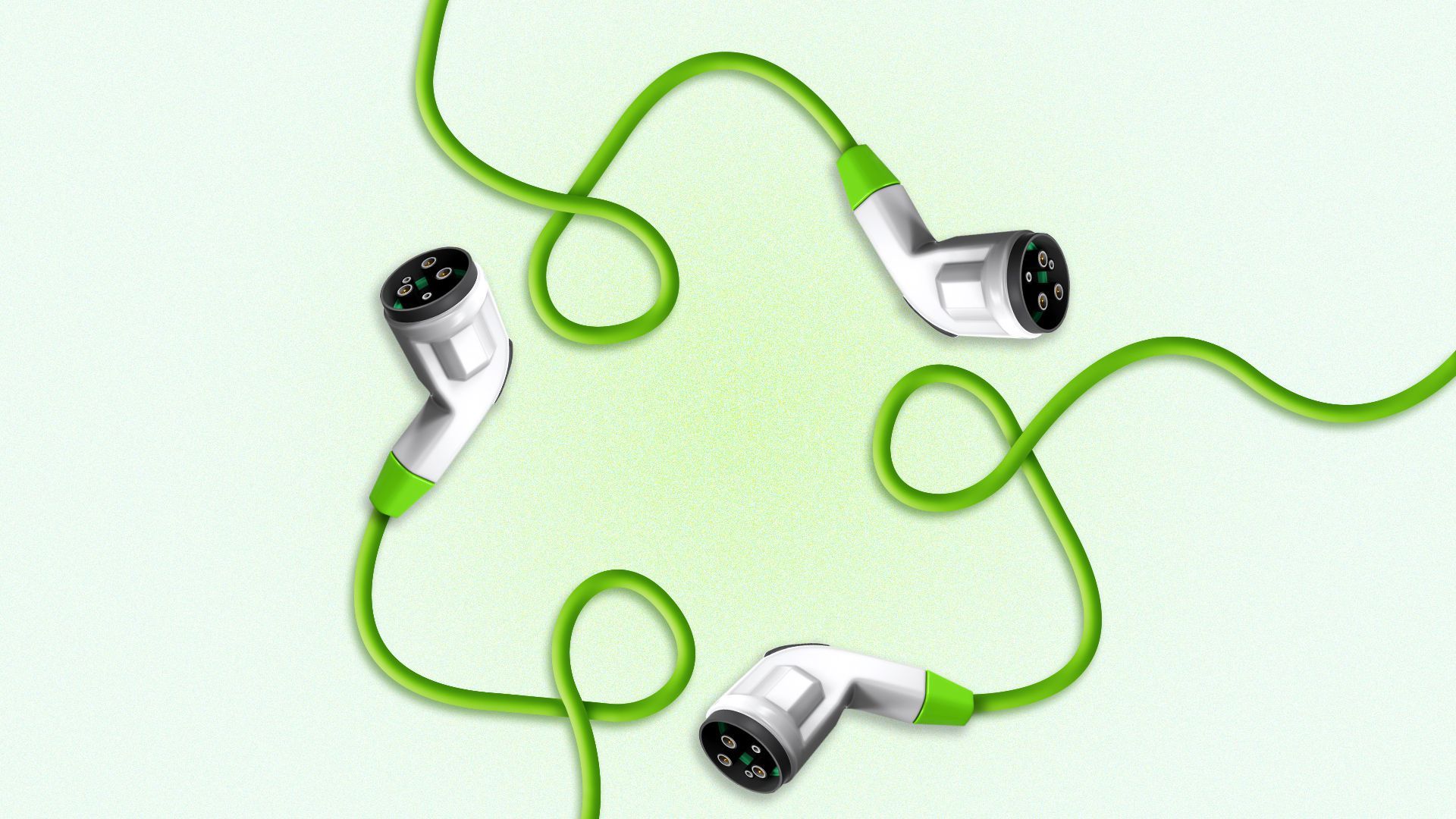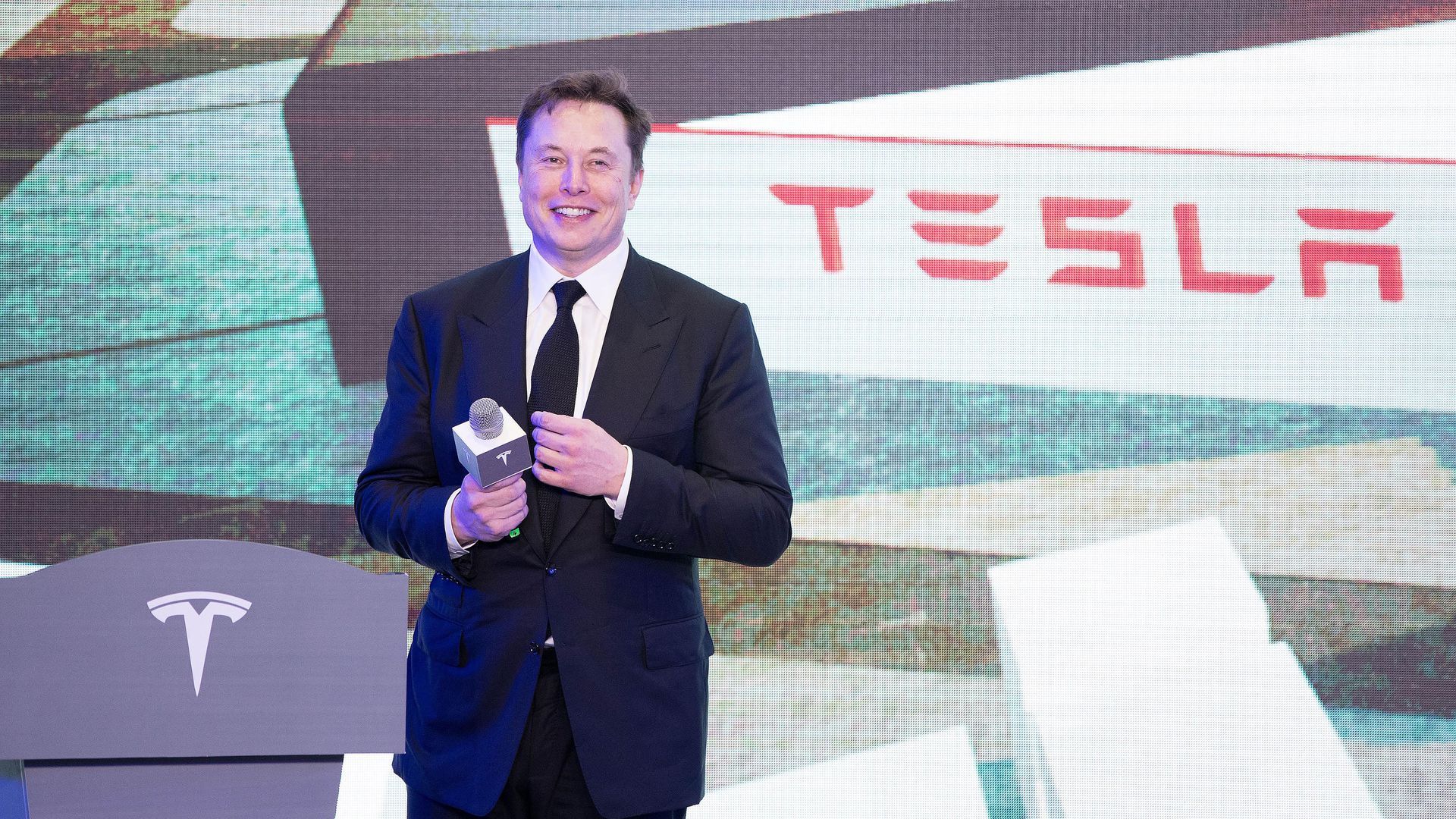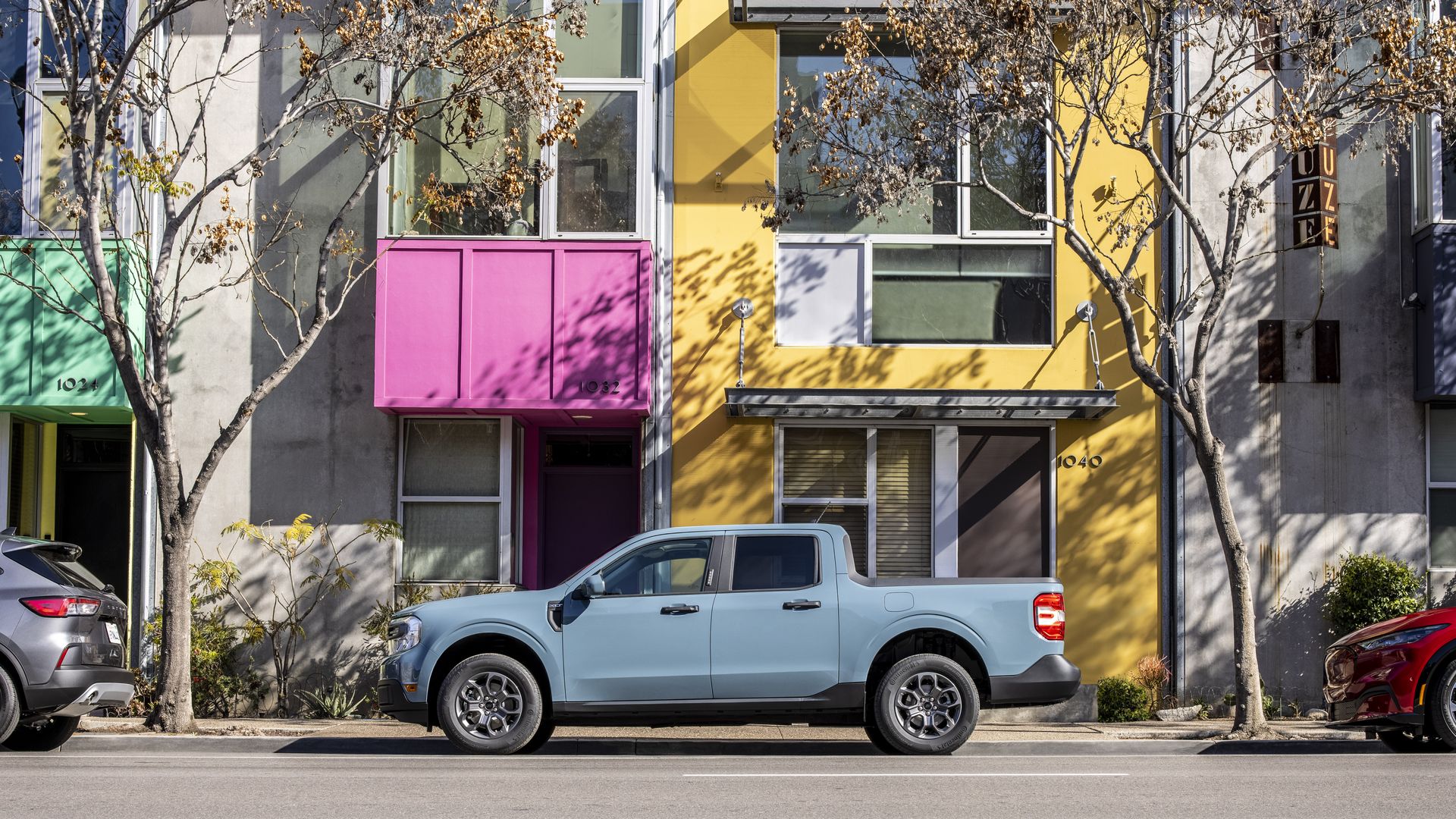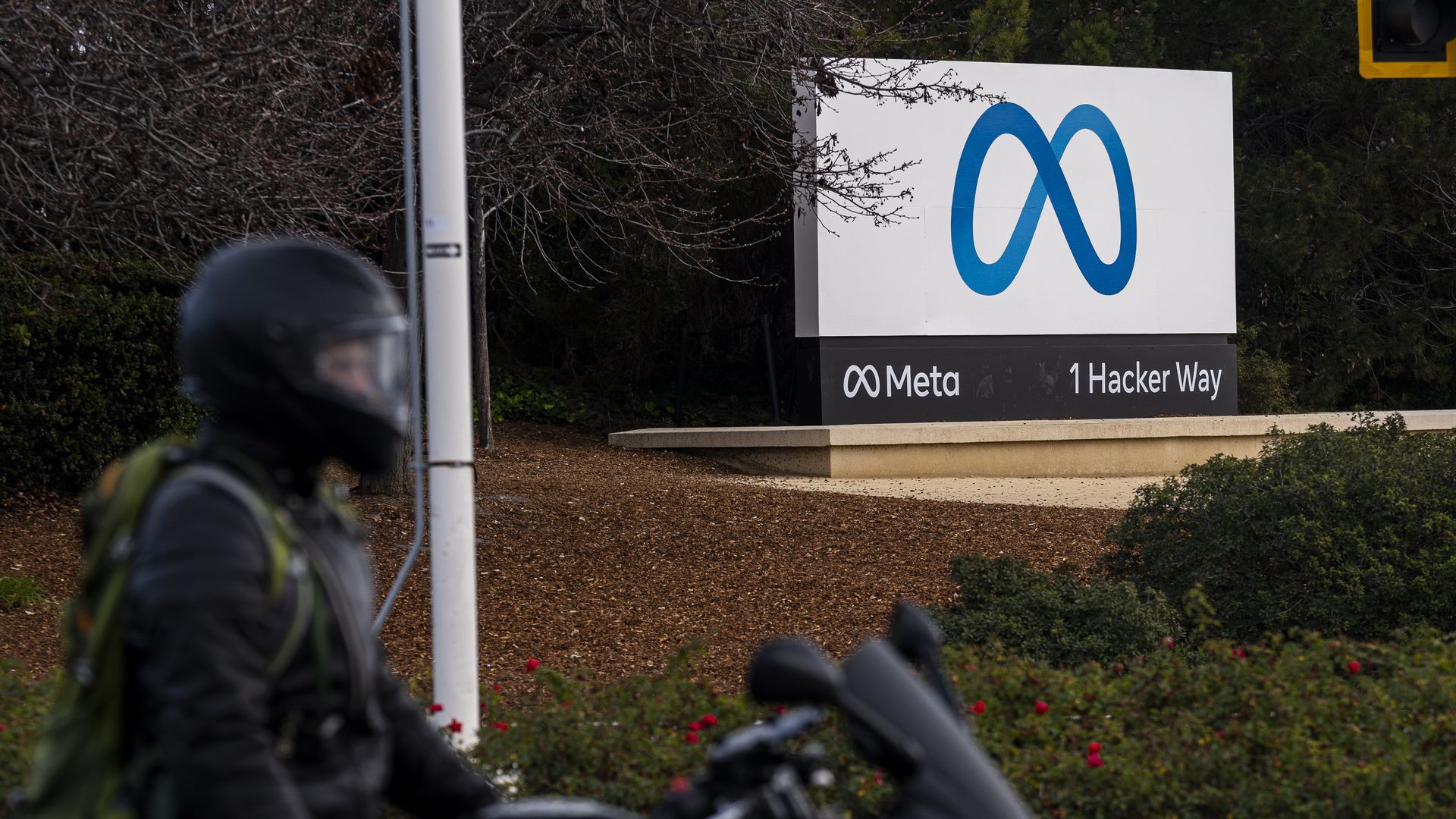| | | | | | | Presented By Deloitte | | | | Axios What's Next | | By Jennifer A. Kingson, Joann Muller and Erica Pandey ·Feb 18, 2022 | | It's a question we hear all the time: What will happen to all those EV batteries when they die? Read on to find out. - Speaking of EVs, Tesla is being investigated by safety regulators, again.
- We're pausing to celebrate President's Day on Monday. We'll be back in your Inbox on Tuesday. Email us at whatsnext@axios.com.
Today's Smart Brevity count: 1,140 words ... 4 minutes. | | | | | | 1 big thing: The charge to recycle EV batteries |  | | | Illustration: Gabriella Turrisi/Axios | | | | As electric vehicles grow in popularity, there's a related challenge on the horizon: how to dispose of worn-out EV batteries. Why it matters: If the U.S. can salvage those end-of-life battery packs, it could reuse the critical minerals inside to make new batteries, creating a sustainable domestic supply chain. - That could help make EVs more affordable and prevent shortages like the current semiconductor crisis.
Driving the news: An ambitious startup called Redwood Materials has enlisted Ford Motor and Volvo Cars as partners on a pilot to figure out how to wrangle all those batteries in a safe, sustainable and cost-effective way. - The pilot will begin in California — America's EV capital — where Redwood will work with dealers and dismantlers to collect old batteries and then safely transport them to its Nevada facilities for processing.
- While Ford and Volvo are helping to fund the pilot, Redwood will accept lithium-ion and nickel metal hydride batteries from any EVs and hybrids.
Where it stands: The U.S. is still a few years off from seeing large quantities of old batteries piling up, but the time to start preparing is now, says Redwood CEO J.B. Straubel, who was a cofounder of Tesla. - "I think we're going to see the numbers really, really pick up probably in two to three years, starting in California, simply because it is the oldest EV market," he told reporters Thursday.
Between the lines: Most EV batteries come with a warranty of eight years or more, but early evidence shows they tend to outlast those guarantees. - That has some carmakers even touting the emergence of a million-mile battery.
- It's possible the vehicles could wear out before their batteries do — especially if they're used in taxi or delivery fleets, where they're driven more frequently.
- On the other hand, many vehicles are now capable of over-the-air software updates, making them seem like new again and again — and potentially extending their ownership cycle.
Battery technology is changing rapidly, too. Early EVs like the Nissan Leaf had a battery range of less than 100 miles. Today's EVs can go at least 250 to 300 miles between charges — a potential incentive to trade up. - EV batteries that still have some usable life could even be repurposed for stationary energy storage.
Eventually, they'll all need to be recycled, however, and Redwood is already preparing to scale up its processing facilities, having raised $700 million last summer to fund expansion. - Today the company recycles 6 GWh of lithium-ion batteries from consumer electronics — the equivalent of 60,000 EVs — annually in North America.
- "It's a bit of the Wild West right now," Straubel says of current EV battery recycling.
- The goal is to turn those batteries into valuable assets to help fuel the shift to sustainable EV manufacturing.
Read the rest |     | | | | | | 2. Mapped: The West's more flammable nights |  | | | Changes in the number of nighttime hours that burnable land spent above a threshold of an index known as the vapor pressure demand. Map: Balch et al., Nature | | | | A new study found that the West is experiencing an increasing occurrence of hot, dry nights that are contributing to more intense wildfires, Axios' Andrew Freedman reports. Why it matters: The trends identified in the study, published in the journal Nature, mean that wildfires are able to grow larger and destroy more structures than they used to. It also means less rest for firefighters. Zoom in: The researchers found there are now about 11 more flammable nights every year in the West compared with 1979, a 45% increase in four decades. What they're saying: "Night is the critical time for slowing a speeding fire — and wildfire' night brakes are failing," said study lead author and a University of Colorado climate scientist Jennifer Balch in a statement. Go deeper |     | | | | | | 3. Triple Tesla trouble |  | | | Tesla CEO Elon Musk in Shanghai in January 2020. Photo: Ding Ting/Xinhua via Getty) (Xinhua/Ding Ting via Getty Images | | | | The National Highway Traffic Safety Administration opened a new investigation into Tesla vehicles Thursday, this time for unexpected braking while in Autopilot and driving at highway speeds, Axios' Jacob Knutson reports. Why it matters: It's the third federal safety probe into Tesla's driving features in the last six months. The big picture: Tesla also recently recalled thousands of vehicles for software updates because its Full Self-Driving beta program allowed some "rolling stops" at intersections. - This week CEO Elon Musk said "the fun police" made the carmaker recall 500,000 vehicles with a feature that allows drivers to change their horn to sounds such as a bleating goat or a fart noise.
|     | | | | | | A message from Deloitte | | Wearable technology in health care: Getting better all the time | | |  | | | | We're witnessing rapid digital and tech innovations that are fueling health care transformation such as wearables and artificial intelligence (AI). What does this spell for data security, privacy and accuracy? Learn more with Deloitte. | | | | | | 4. What we're driving: 2022 Ford Maverick |  | | | 2022 Ford Maverick XLT. Photo courtesy of Ford | | | | It's rare that a vehicle can satisfy so many people with such diverse needs, but the 2022 Ford Maverick scores big on multiple levels, Joann writes. - Finally, a pickup truck that people can afford — and is not impossible to park.
- And it's a hybrid, which means it gets great gas mileage — up to 42 mpg in city driving.
- With a starting price under $20,000, it's also a surprising entry-level model for a brand that no longer sells small cars.
Why it matters: Today's trucks have gotten bigger and more expensive over the years, pricing many would-be buyers out of the market. - The average transaction price of a mid-size pickup is $39,669, according to Kelly Blue Book, while a loaded Ford F-150 or Chevrolet Silverado can easily top $80,000.
The Maverick, on the other hand, is within reach for many, provided you don't insist on a lot of fancy features. - It comes in three trim levels: XL ($19,995), XLT ($22,360) and Lariat ($25,860).
- On the base model, you'll have to adjust the mirror and cloth seats manually, and there's no cruise control or blind-spot monitoring.
- Trade up and you get a nicer interior, with vinyl seats (no leather), a push-button start and modern safety features.
- Infotainment is optional on a small 8-inch screen, but at least Apple Carplay and Android Auto are standard.
The Maverick's design is so clever, however, you probably won't miss those niceties. - A series of notches in the truck bed enable do-it-yourself improvements like bike racks and dividers.
- Ford is even offering instructions for DIYers to 3D-print their own accessories.
- It can't match the towing or cargo-hauling capabilities of the F-150, but as the Detroit Free Press noted, the Maverick "looks and feels like a well-made tool."
The bottom line: There's no other vehicle on the market that offers the value of the Ford Maverick. |     | | | | | | 5. 1 fun thing: New Menlo Park moniker |  | | | Outside Meta HQ. Photo: David Paul Morris/Bloomberg via Getty Images | | | | Just as Amazon employees are known as Amazonians and Google's staffers are called Googlers, Facebook's workers used to be dubbed Facebookers. - But now that the company is called Meta, Facebookers need a new name.
- Well, CEO Mark Zuckerberg announced a new name this week, and it's "Metamates," per the New York Times.
Fun fact: At Axios, we're Axions. |     | | | | | | A message from Deloitte | | Mental health apps offer unique potential | | |  | | | | Deloitte Global predicts the popularity of mental health apps could increase by about 20% this year. Why it's important: These apps make mental health support more accessible and are more resistant to disruption than traditional therapies. Explore the potential. | | | | Was this email forwarded to you? Get your daily dose of What's Next magic by signing up for our free newsletter here. |  | Bring the strength of Smart Brevity® to your team — more effective communications, powered by Axios HQ. | | | | | | Axios thanks our partners for supporting our newsletters. If you're interested in advertising, learn more here.
Sponsorship has no influence on editorial content. Axios, 3100 Clarendon Blvd, Suite 1300, Arlington VA 22201 | | | You received this email because you signed up for newsletters from Axios.
Change your preferences or unsubscribe here. | | | Was this email forwarded to you?
Sign up now to get Axios in your inbox. | | | | Follow Axios on social media:    | | | | | |










No comments:
Post a Comment